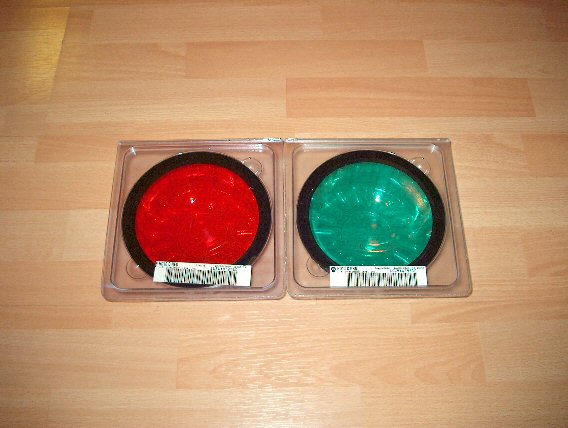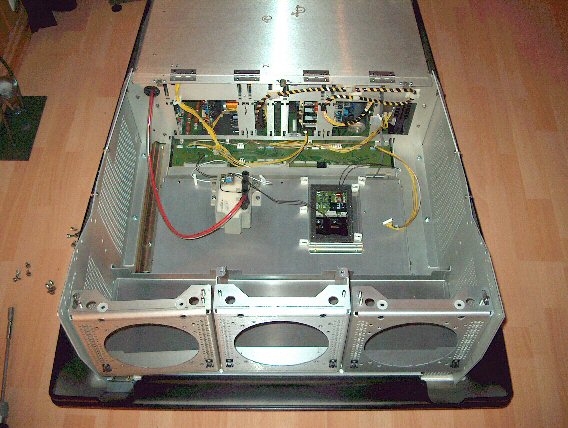For definitions of c-element, liquid coupling (LC), or air coupling (AC),
see this
page. Many liquid coupled (LC) projectors were originally manufactured with clear
red and green c-elements in order to increase the overall light output of the
projector as the original use for many of these projectors was not for home
theater. Light output was more important than colour accuracy. Home theater enthusiasts choose to replace clear
c-elements with tinted ones in order to achieve more accurate colours (i.e. more
accurate SMPTE-C primaries). This is referred to as colour filtering.
Without colour filtering it is not impossible to achieve correct primary
colours on a CRT projector: Reds tend to look orange and greens
tend to look yellow. As explained in our
Grayscale &
Color Calibration for Dummies guide, ensuring that the raw or "primary"
colours used to create all colours are correct is critical to both greyscale and
colour calibration.
Think of painting with a brush: Greyscale calibration ensures that the proper
amounts of paint are mixed together to get the colours we need, while colour
calibration ensures that we have the right base colours to mix in the first
place. Using tinted c-element ensures that we start with the right base colours.
For example: If your bucket of red paint isn't perfectly "pure" red, no matter
how you mix in the other primary colours you'll never you'll never be able to
get that red any more correct.
Regardless of the projector in question, only the red
and green are ever colour filtered. Blue is never colour filtered. Below is a
screenshot with the red tube displaying an image. The left half of the
image is un-tinted and looks orange while the right side shows the effect of tinting
and has a deeper red hue.

Red tube output: No colour filtering on the left, colour
filtering on the right
(Thanks to cmjohnson [CJ] for the example photo)
Every manufacturer is different.
In the case of the Marquee 9500LC the c-element on the green tube of is already
tinted green. Only the red needs replacing. In the case of the Barco
1209s, both the red and green c-elements are clear so both need replacing.
Some LC coupled projectors already have both c-elements tinted. The Sony
G70 and the Zenith 1200 are two examples. Note: Colour filtering of LC
projectors can only be achieved by replacing the clear red and green c-elements
with tinted ones. Air-coupled (AC) projectors achieve colour filtering by using
tinted glycol in the coolant chamber in front of the CRT face (ex: Sony
125x/127x, Barco 800) or by using a tinted element with the lenses themselves
(ex: the HD-144 lenses on an NEC PG or XG). Many AC projectors do not use
colour filtering at all.

Sony 1272 air-coupled projector with tinted glycol

Barco 808 air-coupled projector with clear glycol This article
however, deals only with changing of c-elements for Barco LC projectors. Tinting
of air-coupled projectors will be dealt with a future article. Below is the procedure that
you can use if you want to do the c-element change yourself. This is considered a
very advanced procedure as it requires you to completely remove the tube(s) from
the projector. While this procedure was originally written for the Barco 1209s, it can be adopted for other projectors with clear
c-elements if needed. Tinted c-elements are available from both
VDC and 3M. The following procedure and pictures were graciously provided by
Bjørn Hegelstad of Norway. His web site can be found at:
http://www.crtht.com. Bjørn offers home
theater installations, CRT sales, CRT modifications, and gray scale calibrations.
Steps: Here is a little explanation of how I did the C-Element
change.
I have only done this is on a BarcoGraphics 1209s - other projectors maybe
require other procedures.

The new tinted Red and Green C-Elements
1. First I removed the tubes from the projector.

The tube removed from the chassis

The chassis with all tubes removed

|







